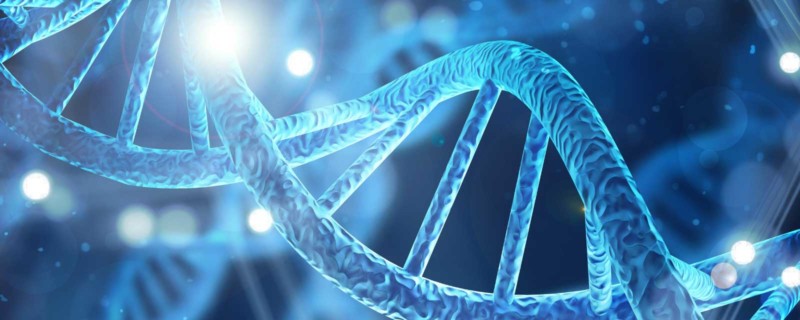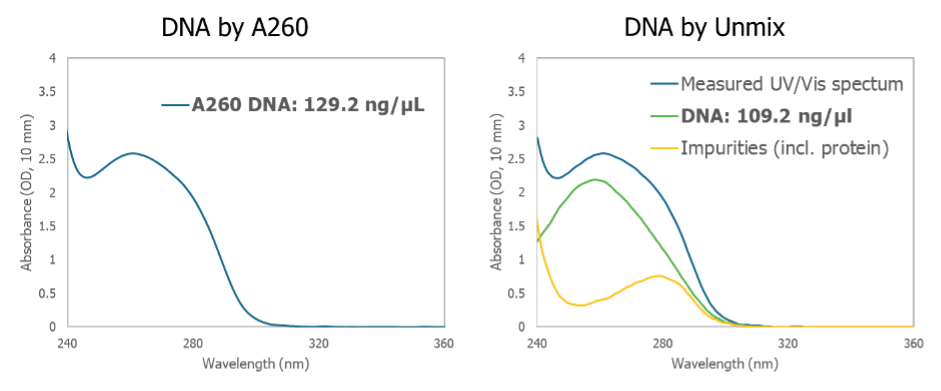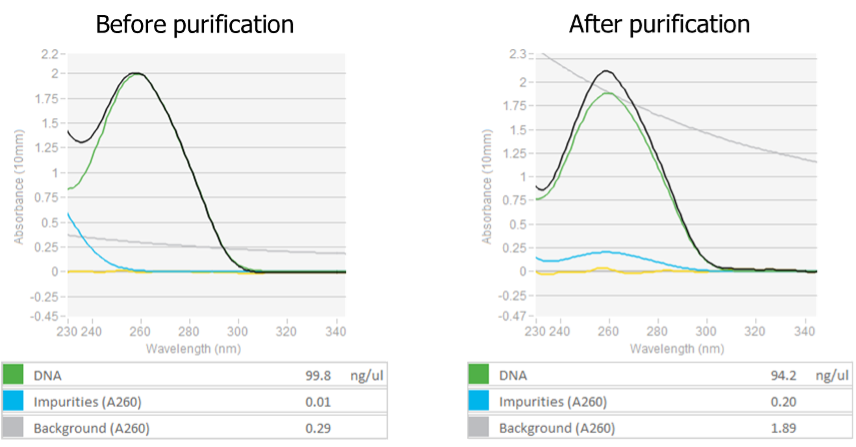
Get the fast, simple, and accurate DNA quant you deserve with Lunatic
Contributor:
In nucleic acid quantification, the limitations of traditional analytical tools put different hurdles in the way of research any time quantification is needed. For most traditional tools, the list of limitations is long: low throughput, high sample volumes, limited dynamic range, expensive dyes, inaccuracy from contaminants, and more. Quantifying nucleic acids by measuring UV absorbance with spectrophotometry has long been established in the lab, but now newer technologies are overcoming classic limitations to make UV absorbance a more complete solution.
Lunatic from Unchanined Labs provides a solution to these challenges by providing fast, simple and accurate DNA quantification. In this webinar, Nelis Denys, Product Manager for Lunatic & Stunner, outlines the benefits of Lunatic and provides use-case examples for quantification of nucleic acids. The system is a full spectrum UV/Vis spectrophotometer with 96-well plates containing built-in microfluidic circuits and fixed measurement pathlengths. Capable of running 96 samples in ≤10 minutes with only 2 µL of sample, this unique platform has a wide dynamic range of 0.03-275 OD (0.5 – 13750 ng/µL dsDNA), which eliminates the need for sample dilution.
To demonstrate instrument performance, several applications on Lunatic measure absorbance standards certified by the National Institutes of Standards and Technology which validate accuracy, precision, dynamic range, and more. One example of Lunatic performance is shown through absorbance readings of uracil and tryptophan standards across 5 different instruments, run in octuplicate, which were found to be within 1.65% of the certified value, with the mean and the median within 1.25%, demonstrating measurement reproducibility and accuracy.
Real-world examples of Lunatic at work
In the webinar, Nelis discusses specific customer use cases where Lunatic has been successful in resolving discrepancies and pain points. One group experienced inconsistent results with their previous quantification method for their high-concentration plasmid preparations, which required large sample dilutions. Lunatic was a great solution for the group because it enabled samples to be read without the need for dilution with the desired accuracy for downstream purposes. A highly concentrated preparation of plasmid DNA at 12.8 µg/µL was run on the Lunatic in a dilution series to demonstrate the high linearity of the data generated by the apparatus. The R2 value for the dilution series (0.9997) is evidence that accuracy and reproducibility can be achieved even for high concentration samples read without dilution.

Lunatic is also able to help with samples containing impurities like protein or other UV-absorbing components. Normally, that would require an additional round of sample purification prior to quantification. To solve this challenge, Unchained Labs uses the Unmix algorithm to separate out the absorbance signal from the DNA from that of the protein and other impurities. In both graphs below, the blue line is the total measured spectrum. On the right, the sample has been analyzed by the Unmix algorithm to isolate the signal contribution from the DNA (green) from the protein and other impurities (yellow) to provide the quantification data needed for the next steps in a workflow.

In another situation, a customer found inconsistencies between the DNA concentration measured by their existing UV absorbance readings and a fluorescent dye quantification protocol. In their troubleshooting efforts, the researchers used Lunatic to test sample concentration before and after purification. On Lunatic, the sample showed significantly higher turbidity after purification, which the researchers attributed to bead carry-over from the purification step. On their old instrumentation, that higher turbidity resulted in an inaccurate, higher DNA reading. In comparison, with Lunatic’s Unmix algorithm the DNA concentrations obtained pre- and post-purification were similar because the software could deconvolute the turbidity spectrum from the DNA itself, which the previous UV/Vis system was unable to do.

Fluorescence dye-based protocols are frequently used for nucleic acid quantification, but have limitations that can impact the accuracy and precision of quantification readouts. For example, PicoGreen and Lunatic results show good correlation within the concentration range where both methods overlap, but at high concentrations fluorescent dyes will become saturated. This limits the dynamic range of fluorescent methods and may require a series of sample dilutions to be run in an assay to ensure that one or more measurements fall within the standard curve, which consumes costly reagents and requires additional operator time. In the data provided by a high-throughput customer shown below, thousands of genomic DNA samples were first measured using either Lunatic or PicoGreen and subsequently normalized to 25ng/µL and read again.

It is evident that there is significantly more variability in the results obtained with PicoGreen (right), compared to samples read on the Lunatic (left). Lunatic offers the benefits of a large dynamic range to accommodate high concentration samples without the need for dilutions over fluorescent dye-based protocols.
Nowadays, it’s common for collaborative efforts to occur in labs spread around the world, which presents challenges in data consistency for data acquired with different systems across different sites. The data shown in the box and whisker plot below showcases both the inter- and intra-instrument data consistency where 3 concentrations of DNA were run in octuplicate on the same system or run in octuplicate on 8 different Lunatic systems, for a total of 64 samples per concentration. Reproducibility within a few percentage points across multiple systems is the key first part to strong scientific collaboration.

Other Key Features of Lunatic
For groups that require high-throughput capabilities, Lunatic plates are SBS standard with options for integration with robotic liquid handlers through the instrument’s API. Fully automated workflows can execute up to 960 samples/hour and data export into a lab’s LIMS to expedite workflows from sample loading through to data acquisition.
Additionally, Lunatic and its software are ready to meet regulatory requirements in manufacturing, quality assurance, and quality control labs. IQ/OQ protocols and UV/Vis Performance Verification using pharmacopoeia certified standards prove instrument performance. Lunatic software offers 21CFRp11 tools like full audit trails and electronic signatures to ensure data integrity and security. Built upon trusted UV/Vis technologies for nucleic acid quantification, Lunatic offers next generation capabilities for a variety of research and commercial applications.
To view the webinar in full, please click on the video above.